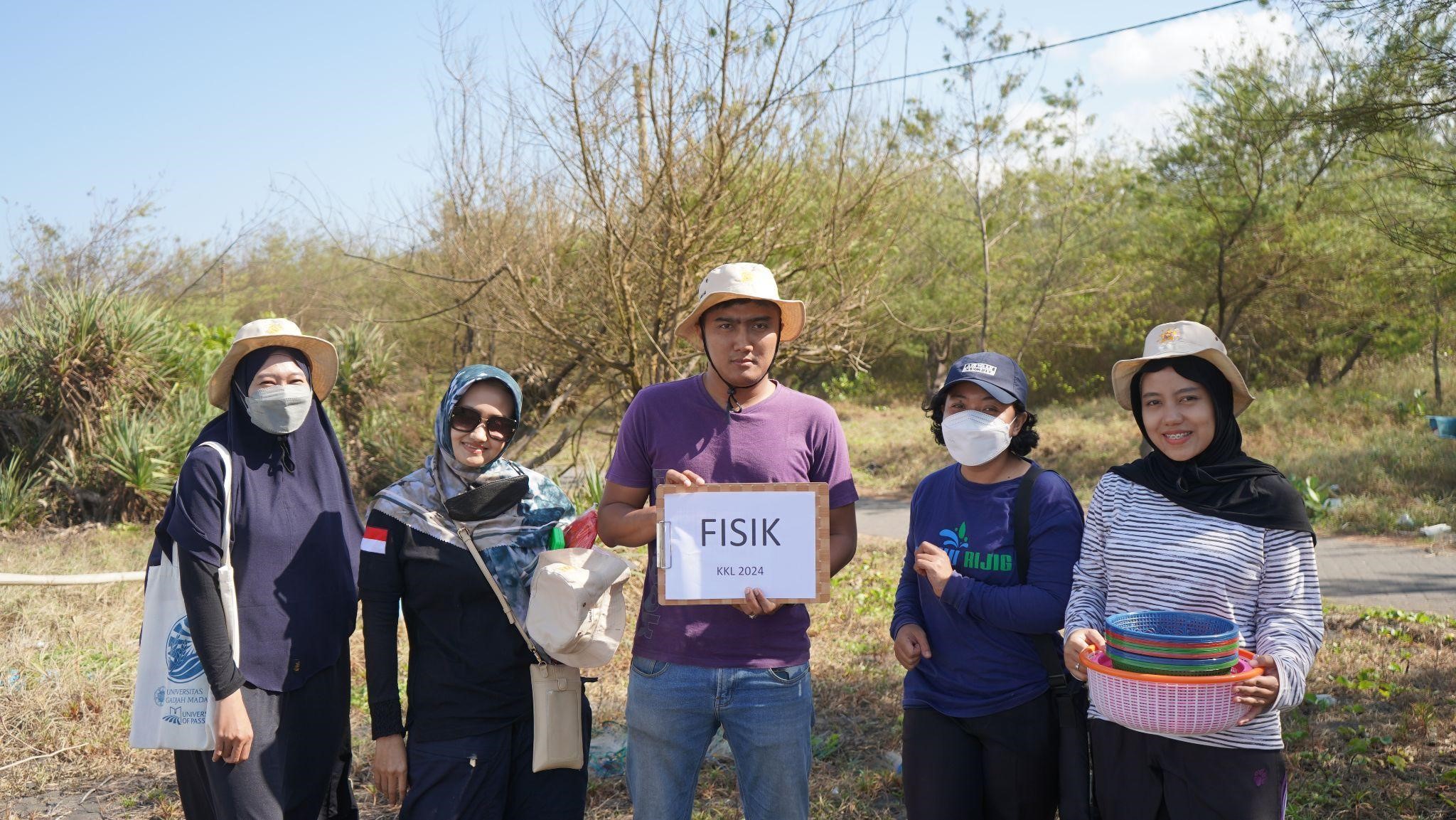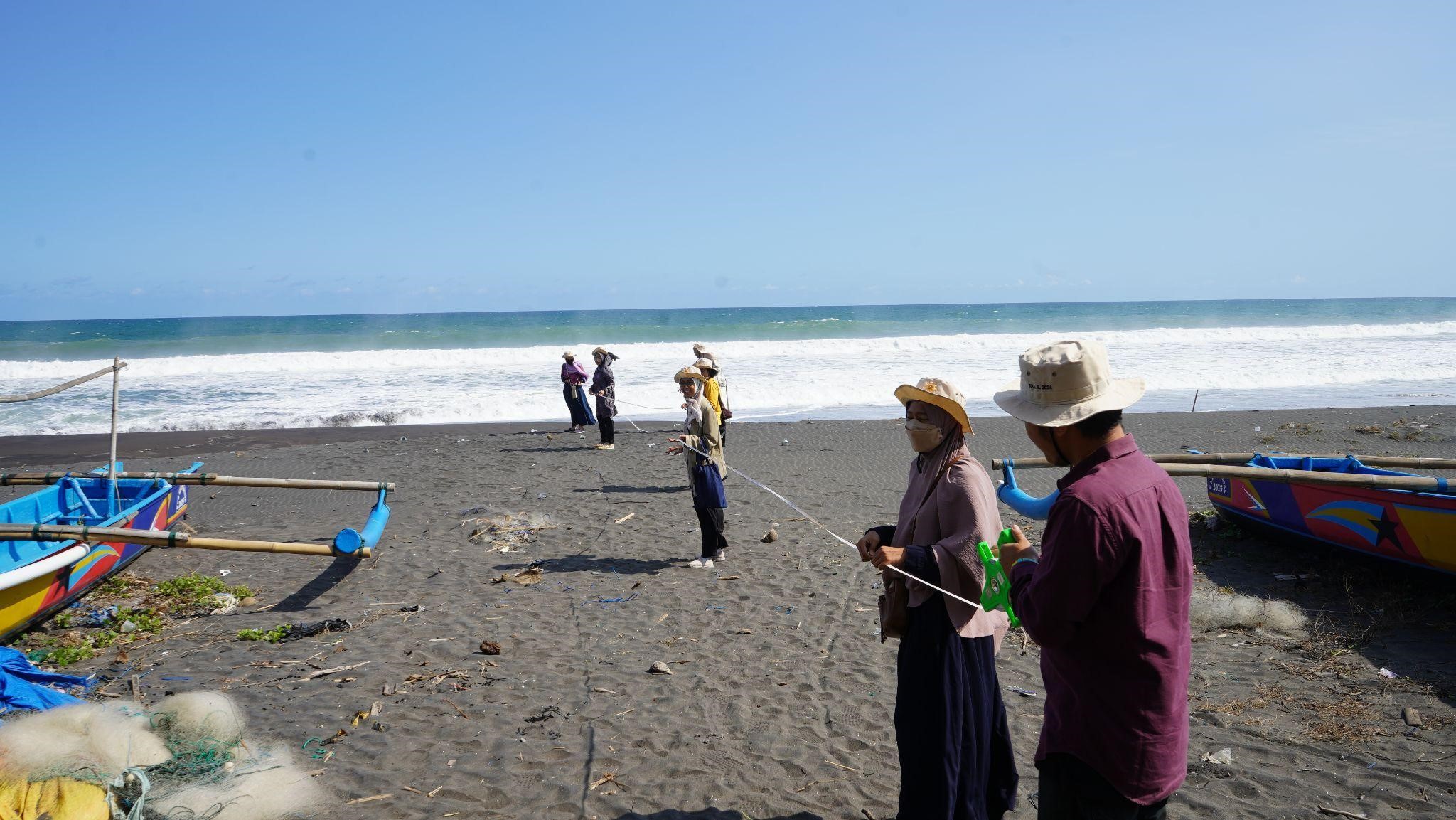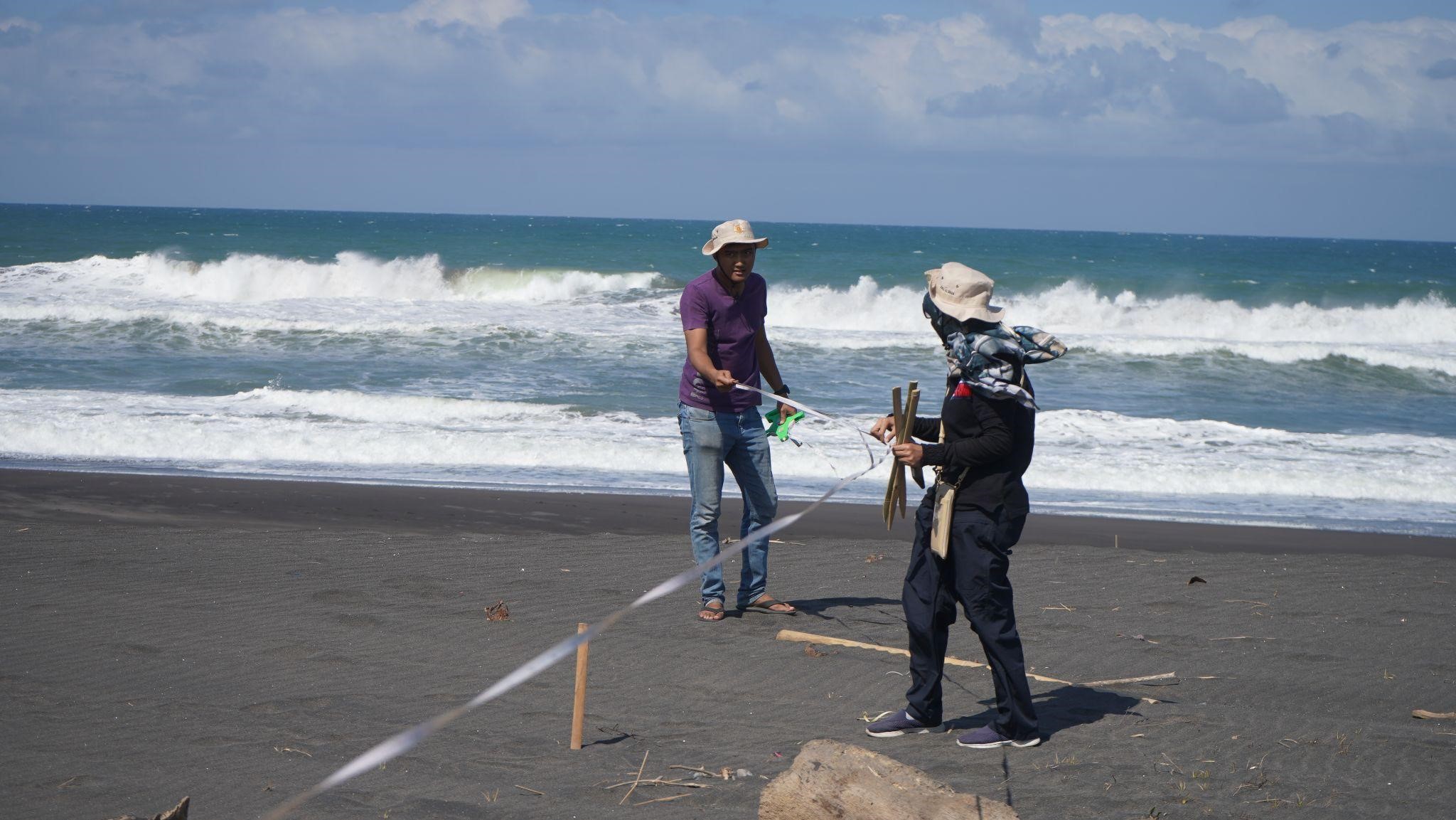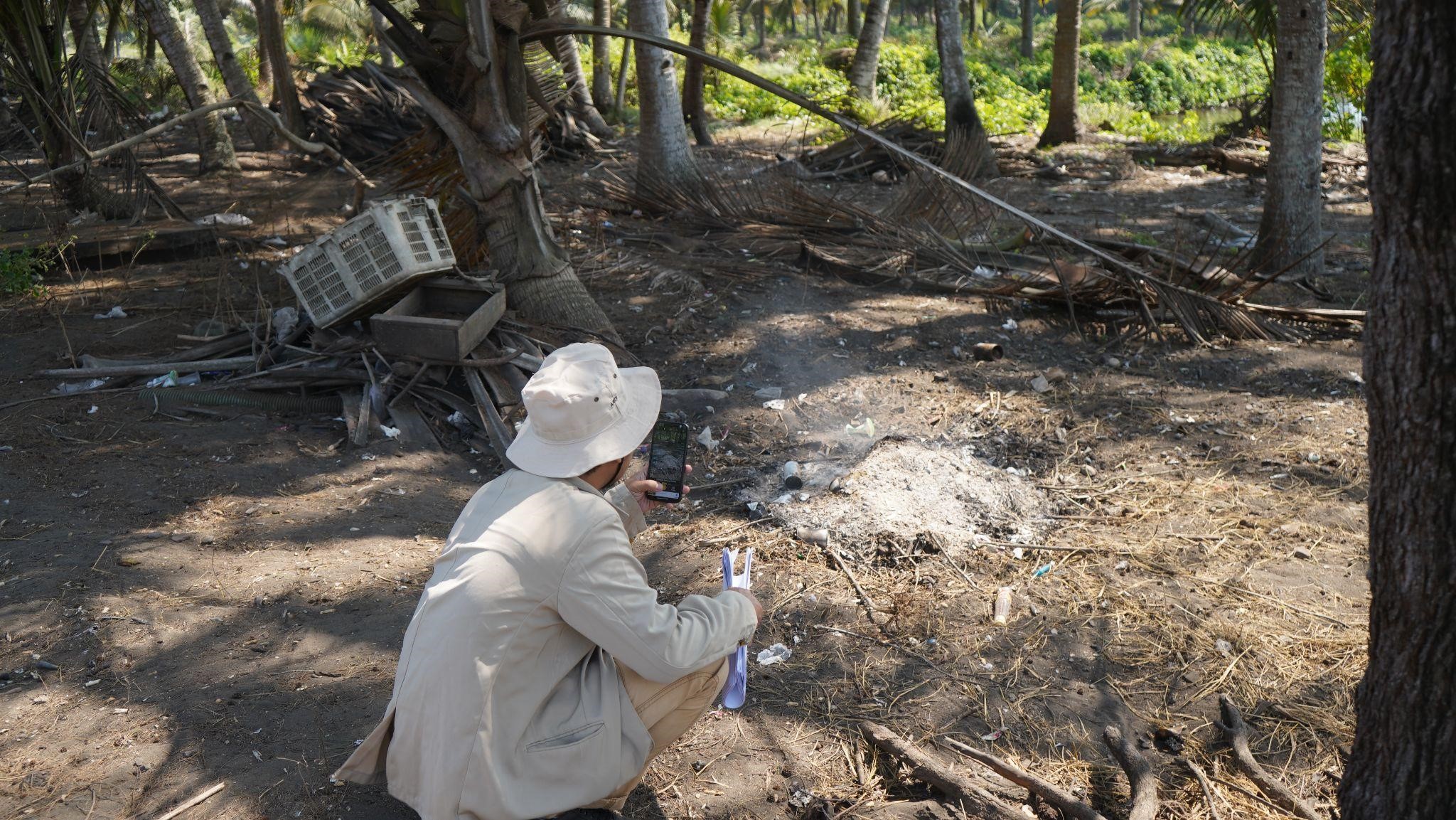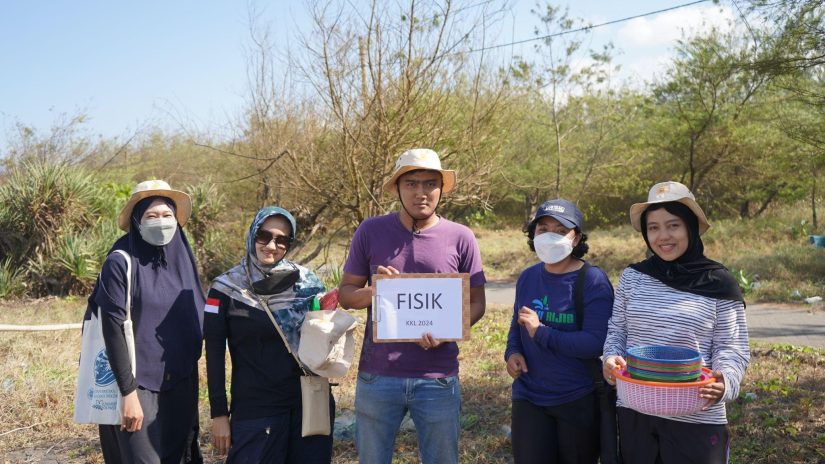
Yogyakarta (19/7), the Master of Environmental Science Study Program at the Graduate School of Gadjah Mada University carried out Field Work Lecture (KKL) activities in the coastal areas of Jatikontal Village and Gedangan Village, Purwodadi District, Purworejo Regency, Central Java Province. Participated by 14 students and 3 supervisors, this KKL activity focused on waste management in coastal areas.
“We collected data for physical analysis at 2 (two) locations, namely Jatikontal Beach and Demang Gedi Mangrove Education Park (TEM). “We carried out trash collection to later calculate the beach cleanliness index (Clean Coastal Index) and the hazardous materials index (Hazardous Items Index) on the beach,” said Fianika Yuniasari, Master of Environmental Science student.
Based on the results of physical analysis on the beach cleanliness index, the Jantikontal Beach area was divided into 3 zones with sharp and dangerous waste categories found. Furthermore, at the Demang Gedi TEM, most of the rubbish found in the mangrove area was thought to come from household waste disposal, fishermen and community activities around the coast.
The results of the physical analysis of the hazardous materials index with the sharp objects category and the toxic objects category found at TEM Demang Gedi contained hazardous waste, namely building materials, fishing equipment and metal-spiked cages. Based on the calculation results, it was found that quite a lot of dangerous waste was found, while dangerous waste in the toxic category was not found in the TEM Demang Gedi area.
Waste management in coastal areas is considered a controversial problem and there has been no comprehensive concrete action even though various government policies have been issued regarding this matter. This is a concern for the community and government in order to create a clean environment, especially in coastal areas.
Tags: household waste, beach cleanliness index, mangroves, SDGs, SDG 3: healthy and prosperous life, SDG 4: quality education, SDG 6: clean water and adequate sanitation, SDG 14: ocean ecosystem, SDG 15: land ecosystem
Author: Siti Muyasaroh


